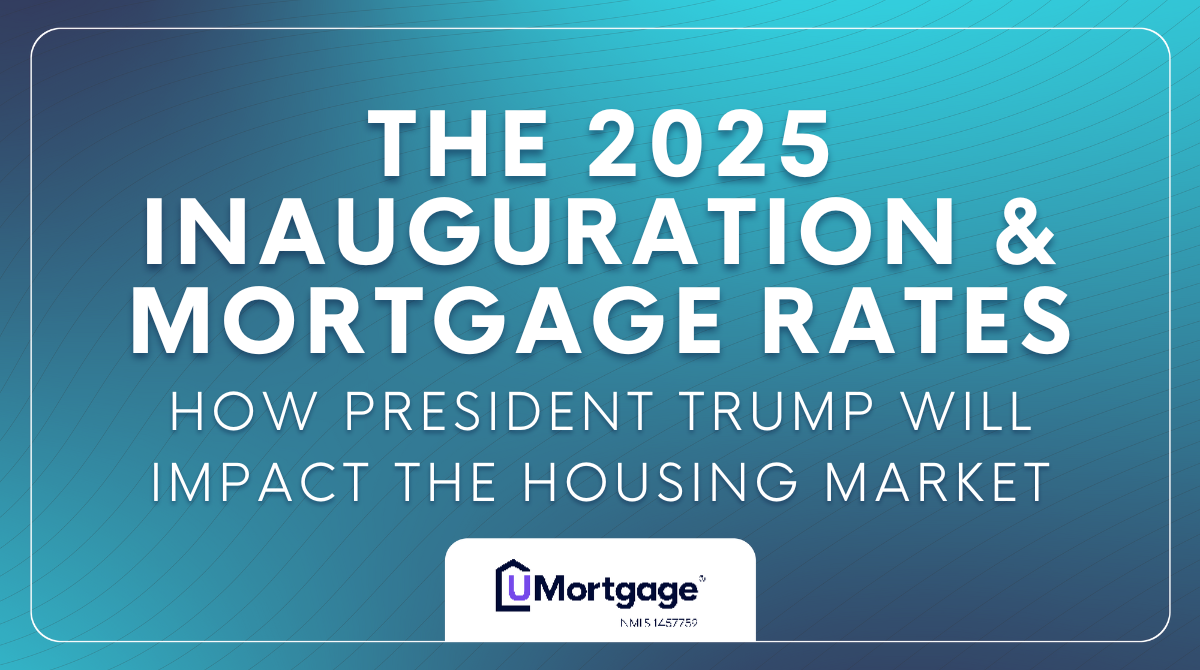How the 2025 Inauguration Impacted the Housing Market
Published: January 21, 2025
Updated: January 22, 2025

How the 2025 Inauguration Impacted the Housing Market
President Donald Trump officially took office for his second term on January 20th, 2025. From day one, the new administration outlined its priorities for housing, inflation, and economic growth. As these policies take shape, here is an overview of how they might influence the housing market and the broader economy.
Housing Affordability: A Focus on Reducing Costs
During his campaign, President Trump pledged to address housing affordability by cutting regulations and introducing tax incentives aimed at reducing construction costs. These measures are intended to stimulate new home construction and increase housing supply, potentially helping to stabilize high home prices.
On the night of his inauguration, the administration released a memorandum regarding an executive order addressing housing relief. The memo stated, “Many Americans are unable to purchase homes due to historically high prices, in part due to regulatory requirements that alone account for 25 percent of the cost of constructing a new home according to recent analysis.”
Trump has already followed through on his promise to start cutting regulations on the first day of his second term. The aforementioned executive order includes a freeze on government hiring and the creation of new federal regulations. Additionally, a newly established Department of Government Efficiency will review federal agencies and identify opportunities for regulatory cuts.
One such agency is the Department of Housing and Urban Development (HUD), now led by Scott Turner—a former Texas state representative and executive director of the White House Opportunity and Revitalization Council.
Turner has expressed a commitment to maximizing existing resources but has not yet detailed plans for federal investments in affordable housing programs. The department’s future budget and priorities will become clearer as the administration’s broader fiscal policies are implemented.
Tariffs and Their Potential Effects on Housing Costs
A significant area of focus for the administration is the proposed implementation of tariffs. While these measures aim to protect domestic industries, they may also increase the cost of construction materials, potentially driving up prices for new homes and contributing to inflation.
President Trump announced plans to enact tariffs on imports from Canada and Mexico starting February 1st, alongside higher tariffs on Chinese goods. Economists warn that these tariffs could lead to higher costs for homebuilders. According to the National Association of Home Builders (NAHB), 70% of sawmill and wood product imports come from Canada, which already faces a 14.5% tariff.Another report from the NAHB shared that China provided the largest share of imported goods used in residential construction at 27%, making homebuilders particularly sensitive to trade policies.
Tariffs could also influence mortgage rates through their impact on inflation. A report by Pantheon Macroeconomics estimates that a 10% universal tariff could increase inflation by approximately 0.8% in 2025. Rising inflation may prompt the Federal Reserve to adjust interest rates, further affecting the housing market.
Tax Proposals and Household Finances
The Trump administration has proposed extending the 2017 Tax Cuts and Jobs Act and introducing new tax reforms, including exemptions for tip income, overtime pay, and Social Security benefits, as well as deductions for auto loan interest. While these measures could increase disposable income for many Americans, the potential rise in consumer goods prices due to tariffs could offset these benefits.
During his inaugural address, President Trump reiterated his commitment to policies that prioritize American workers and families, stating, “Every decision on trade, on taxes, on immigration, [and] on foreign affairs will be made to benefit American workers and American families.”
However, none of the executive orders signed on January 20th directly addressed tax reforms, leaving questions about the timeline for implementing these proposals.
Federal Reserve’s Role in the Housing Market
The Federal Reserve has been actively working to maintain a healthy jobs market while completing its coveted "soft landing" for the fall of inflation. Although tariffs create worries about inflation, the Fed seems to have concerns about the impact of mortgage rates rising above 7%, as indicated by a statement from Fed President Christopher Waller during an appearance with CNBC.
Likely part of this is the impact that high mortgage rates have on construction jobs. In previous economic cycles where the Fed maintained high mortgage rates, homebuilders began laying off construction workers, and a recession closely followed.
Of course, economic health will remain a priority, and rates will continue to be largely driven by inflation and the labor market. As things stand, jobless claims data remains at historic lows while inflation has fluctuated between 2.5% and 2.9% in the final months of Biden's presidency.
What Lies Ahead for Homebuyers
The coming months will reveal the extent to which these policies impact housing affordability, mortgage rates, and overall economic growth. While some measures, like tax reforms and regulatory cuts, aim to increase homeownership opportunities, others, such as tariffs, may introduce cost pressures.
If you’re considering buying a home or refinancing, now may be a good time to explore your options. Connect with a UMortgage Loan Originator in your area to get personalized guidance tailored to your financial goals.
